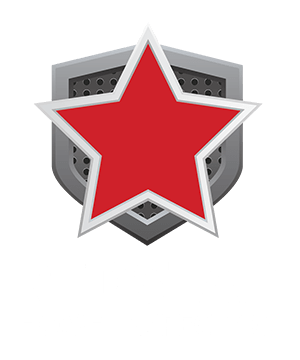Glossary – P
Panel: A section of a surface, e.g., a wall, ceiling, that is raised or recessed and usually enclosed in a frame like border; prefabricated construction materials, e.g., gypsum board, plywood, fiberboard, plasterboard.
Panel Board: A panel to which are attached electrical meters and control equipment for electrical service distribution.
Panel Heating: A radiant heating system; one in which pipes or coils are embedded in walls or ceilings to serve as heating panels.
Parapet: A low wall or railing along the edge of a roof, balcony, bridge or terrace; constructed for protection, to control water, resulting from rain or artificial flooding or to insulate against sun’s rays.
Parapet Wall: That part of a wall which extends above the roof line.
Parquet Floor: A floor that is laid in rectangular or square patterns, not in long strips; often of pre-finished, thin, fabricated wood blocks.
Partition: An interior wall that divides a building; e.g., a permanent, inside wall that divides a house into various rooms.
Party Wall: A common wall erected along the boundary between adjoining properties; the respective owners have common right of use.
Patio: A courtyard; an open paved area used for outdoor living and which may or may not be partially or entirely surrounded by rooms or other parts of a house.
Penetrating Oil: Oil used to loosen joints, particularly rusted ones, between metal parts.
Penthouse: A building on the roof of a structure that contains elevator machinery, ventilating equipment, etc.; separate dwelling or apartment on the roof of an apartment house or other building; any roof-like shelter or overhanging part, e.g., a part that shelters a doorway.
Percolate: To pass slowly through a small opening, as a liquid. To filter.
Percolation Rate: Period of time it takes for water to be absorbed into the soil.
Perimeter: The total length of the periphery of a given area; e.g., the distance around the outside of a building.
Permanent Incorporation: When referring to wood framing members, this occurs when the wood is cut to size and nailed in place.
Perpendicular: Being at right angles (90 degrees) to a given line, plane or surface.
Picture Window: A large window, usually a fixed pane of plate or insulating glass; sometimes divided into small panes designed to command an interesting view or allow more light into the interior of the building.
Pier: A masonry column, usually rectangular in horizontal cross-section, used to support other structural members. Also a platform extending into water.
Pigtail: (1) A flexible conductor attached to a light fixture which provides a means of connecting the fixture of a circuit. (2) A short length of copper conductor that is attached to the end of an aluminum branch circuit by a special fastener. The copper conductor is then fastened to the terminal of a switch or outlet.
Pilaster: A pier-type projection of the foundation wall that is used to support a floor girder or stiffen the wall.
Piling: Beams driven vertically to support a building, bridge.
Pilot Flame: Small gas flame or electric spark that ignites a gas burner in a range, water heater, dryer, furnace or boiler.
Pilot Hole: Starter hole drilled into wood or metal before inserting a screw or nail to prevent fastener from splitting wood. Diameter of hole must be smaller than fastener.
Pilot Orifice: Small hole in a pilot through which gas passes before igniting.
Pitch: The degree of roof incline expressed as the ratio of the rise, in feet, to the span, in feet.
Plaster: A mixture of lime, sand and water that is used to finish walls and ceilings.
Plenum: A chamber or large duct above a furnace that serves as a distribution area.
Plumb: To determine if a vertical surface is exactly perpendicular (90 degrees) to a horizontal plane.
Ply: A term to denote the number of sheets in a layered construction, such as plywood, roofing, etc.
Pointing (Repointing): The filling of open mortar joints. Removal of deteriorated mortar from between joints of masonry units and replacement of it with new mortar. Poor: In below-average condition given its age and function, will need substantial repair or replacement in the reasonably near future, showing definite signs of wear and/or usage.
Porte Cochere: A roof that extends from a building’s entrance over an adjacent driveway to shelter people getting in or out of vehicles.
Portico: A roof supported by columns, either part of a building or standing alone.
Powder Actuated Fasteners: A fastener which is set (usually into masonry or concrete) by a powder charge.
Primary Windows and Doors: Windows and/or doors which are designed to remain in their respective openings year round and not left open for the entire summer.
Prime: To apply an undercoat of paint or sealer to seal pores of wood and provide a surface to which finish coats can adhere.
PRV: Pressure Release Valve. Serves as a safety device on water heaters and boilers.
PTL: Pressure Treated Lumber. Resistant to water and insects.
Pulley: A wheel grooved to receive a cord, cable, or belt, such as in a window sash, roll-up garage door, or blower.
Purlin: A structural member that is laid horizontally to support roof rafters or a roof deck; in mansard roof construction, a base that supports the rafters in the upper slope of a gambrel or mansard roof.
Pyramid Roof: A roof with four sides and four ridges that resembles a pyramid; usually comes to a point in the center.
PVC: Polyvinyl chloride (plastic) waste line material.






